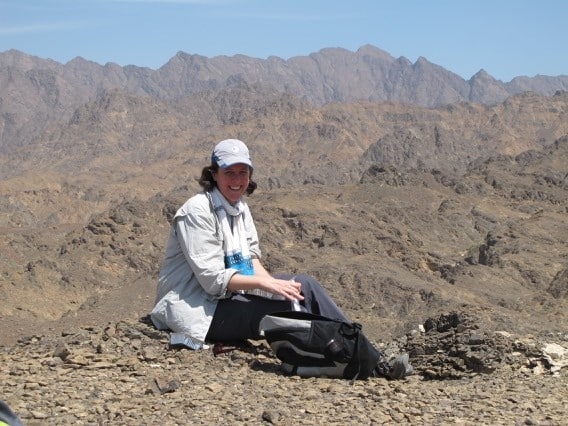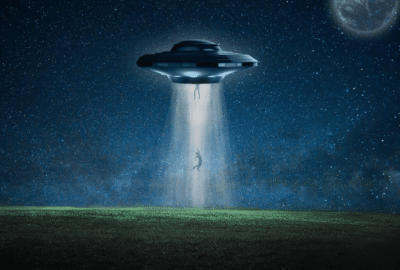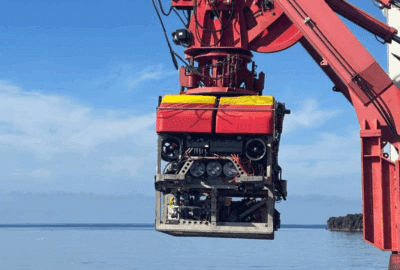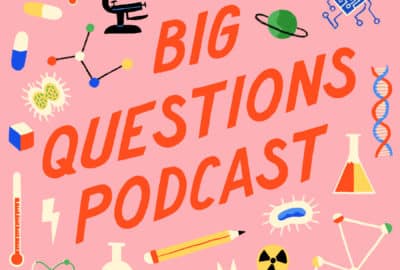How are volcanoes formed on other planets?
Wednesday 10th Apr 2024, 12.30pm
Volcanoes are pretty amazing! But how do they work on other planets?
Take Mars – it has the largest volcano in the solar system! But volcanologist Tamsin Mather reveals that the red planet is now considered geologically dead, with no volcanic activity for around 500 million years. How do we know how this volcano formed then? Well, space missions have put probes and landers on Mars’ surface, providing evidence of a long lost hot spot beneath the surface.
What about the rest of the solar system? There are glimpses of volcanism on Venus and Jupiter’s moon, Io, too. But how do scientists know? Listen to our latest podcast to find out!
If you would like to learn even more about the volcanoes of Earth and beyond, why not give Tamsin’s new book, Adventures in Volcanoland, a read!
Emily Elias: Volcanoes are crazy enough on this planet, but what the heck is going on in outer space? On this episode of the Oxford Sparks Big Questions podcast, we are asking, how are volcanoes formed on other planets?
Hello, I’m Emily Elias, and this is the show where we seek out the brightest minds at the University of Oxford, and we ask them the big questions. And for this one, we have reached a researcher who has literally written the book on this.
Tamsin Mather: So, my name is Tamsin Mather. I’m a Professor of Earth Sciences at the University of Oxford and I specialise in studying volcanoes.
Emily: And you’ve also written a book about volcanoes.
Tamsin: I have. I’ve just written a book called ‘Adventures in Volcanoland’ which is coming out, or is out, in April in the UK and June in the US. And it’s a mixture of, like, personal memoir (so it’s all about my travels around the world studying volcanoes, the different science I was doing in these places), but it’s also about the history of science, the history of volcanology, and the history of some of these places as well. But also thinks about future looking, what volcanoes might tell us about the future of our planet as well as its past.
Emily: And we’re going to talk a bit about the future today because we’re going to go into outer space and talk about volcanoes in outer space. But before we get there, can you just give us the quickest volcanoes 101. How do they form on Earth?
Tamsin: So, on Earth, most of our volcanoes, draw from molten silicate magma – so molten rock. Our Earth is made up in layers. We live on the crust and the layer below the crust is known as the mantle. Now, most of the time, the mantle is solid. It does actually convect, but it creeps really, really slowly about the speed your fingernails grow. But in some places on the planet, it melts and creates magmas. magmas give rise to volcanoes.
So there are various different ways this can happen. So where you have two tectonic plates, so these are these rigid parts of our crust pulling apart, like in places like Iceland, for example, this reduces the pressure on the magma and on the mantle underneath and causes it to partially melt, giving you a magma.
In, other places you’ve got a tectonic plate sinking under another one in subduction zones, in places like Central America or Indonesia. And there the plate going down takes water down into the Earth’s mantle and that water changes its composition and causes it to melt. So it’s a bit like putting salt on your driveway when it’s iced up in the winter.
Then the third main type of volcanism we get is hotspot volcanism on our planet. So this is in places like Hawaii where you have a hotspot in the Earth’s mantle that rises up from deep, and as it rises up and goes to lower pressure, it partially melts and that gives you magmas and causes volcanoes like those on Hawaii.
Emily: But a key element of the ones on this planet are with plate tectonics.
Tamsin: Absolutely.
Emily: The plates are shifted and moving and we get these volcanoes.
Tamsin: Yeah, that’s our framework for understanding volcanoes on Earth and where they occur.
Emily: So now, let’s look at our neighbour, Mars. Do they have plates that are shifting and moving the same way that Earth does?
Tamsin: Not in the same way. So Mars is quite a bit smaller than Earth. So it has cooled more quickly over the long history of our solar system. So we don’t actually see any evidence for volcanos, active volcanoes on Mars at the moment. We think that most of the activity stopped about 500 million years ago. So, there’s plenty of evidence of volcanoes on Mars, but we think the plant is basically geologically dead because it’s cooled down inside it.
Emily: How do we know any of this?
Tamsin: So, we sent various probes to Mars. We sent various landers to Mars so we can study lots of the landforms there. And we see all sorts of intriguing things about Mars’ history. But the volcanoes there are really impressive, actually. So the largest volcano in the solar system is on Mars, a mountain called Olympus Mons. So it’s about 600 km in diameter. So its whole footprint is about the size of the state of Arizona in the US. It’s about 20, just over 20 km high. So it’s more than twice the height of Mount Everest here on Earth.
Emily: That’s huge.
Tamsin: It’s absolutely huge. And basically what’s happened there is it’s probably a hotspot in Mars’ mantle, that caused the magmas, so caused the melting of Mars’ mantle. And because it does, Mars does not have plate tectonics in the same way as Earth does, the hotspot just sat with the same bit of crust over the top of it and built this enormous volcano. So hot spots in Earth’s mantle, the crust moves over the top. So we get the, the island chain of Hawaii. We’ve got dead volcanoes trailing away from the hotspot and then the active volcano where it is now basically Killauea and Mauna Loa on Big Island. But on Mars, all those volcanoes are all rolled into one monster known as Olympus Mons.
Emily: So that’s sort of like our closest comparison to sort of figure out what’s happening on Mars would be like the Hawaii example.
Tamsin: Yeah, I think that’s right, yes. So it’s basically shield volcanoes like Hawaii and then flood basalts. So, these enormous lava flows covering segments of the planet.
Emily: Well, what’s happening on other planets? Do all planets have volcanoes or not.
Tamsin: We haven’t seen evidence on all planets, but we certainly have seen evidence on Venus, which is our closest analogue in many ways to Earth in terms of size and properly composition. So it’s really tricky to study Venus because you have these really thick clouds of sulfuric acid in its very dense and heavy atmosphere. So you can’t use visible radiation to study Venus the way you can Mars or Earth or the moon or other planetary bodies like that. But we can use radar, which can… So radar waves, radio waves can penetrate through these clouds, and can give us a map of the topography, the shape of Venus’s land, and we can look at that, and recreate the landscape down there.
We can see plenty of evidence of volcanic activity on Venus, but again, we do not have plate tectonics in the same way as earth. So Venus actually has a very, very thick atmosphere. It’s a little bit closer to the sun, so it lost a lot of its hydrogen which then meant it dehydrated the atmosphere. So you couldn’t get that ocean part of the tectonic cycle. This has led to carbon dioxide from its volcanoes being caught up in its atmosphere with no sink turn, with no way of getting it out. And there’s a runaway greenhouse which has made it such a hellish place with these super dense atmosphere, super heavy and super hot.
Emily: That’s crazy. So do we know, are the volcanoes on Venus, are they actively working or are they just sort of there?
Tamsin: So that’s a really great question, and it’s really intrigued us as scientists, as volcanologists for many, many decades. There’s really tantalising evidence that Venus is volcanically active. So just recently, just in the last 18 months, some scientists from the US revisited some of the old Magellan radar data from many decades ago and they found between two overpasses (so the Magellan probe going over, with a period of time in between), they found a change in shape of one of the volcanoes, which they think could be a sign of volcanic activity.
Emily: So are there any like volcanoes out there that are like ones that scientists can look at and go like, yes, we know that this is an active volcano. This isn’t from a gajillion trillion years ago. This one is like pumping out stuff and we can kind of see what’s happening.
Tamsin: Yeah. So actually, by some measures, the most volcanically active planetary body in the solar system is Jupiter’s moon Io. So Io is right up close with Jupiter. Jupiter is an absolutely enormous gas planet. So Io is about the same distance from Jupiter as our moon is from the Earth. but Jupiter is very, very much more massive. So Io is essentially orbiting Jupiter and the enormous gravitational pull of Jupiter actually pulls it out of shape.
Emily: Oh, weird.
Tamsin: And it’s not just Jupiter that is pulling it out of shape. It’s got two of its fellow moons, Europa and Ganymede, that periodically kind of line up in a line with Jupiter, with Io squished in the middle. What this does with Io is kind of squeeze it a bit like a, I guess a squash ball or you know, when you squeeze a tennis ball and you can kind of feel that energy and feel it warming up a tiny bit. And that’s what’s happening to Io all the time. So actually, Io’s volcanism is sustained by this gravitational push and pull of Jupiter and its fellow moons.
Emily: Like a pimple being popped, it is just under pressure to erupt.
Tamsin: What a horrible analogy. Yeah. so Io was discovered… the volcanism on Io was basically discovered when Voyager one passed (this was back in 1979) and a scientist called Linda Morabito working over in the States, and she was just looking at the images for navigational purposes. And then she sort of tweaked one image, the contrast on one image and suddenly saw this enormous fountain of material coming out of IO against the darkness of space.
Emily: It’s crazy. I mean, is it exciting to you to think that there are volcanoes on other planets considering you’ve spent so much of your life dedicated to looking at and studying and researching volcanoes on this planet?
Tamsin: I find it absolutely fascinating because I think the really exciting thing is it really challenges our parameter space. It challenges our assumptions, it challenges our thinking about volcanoes on Earth. So we have this understanding of volcanism here, but it’s within fairly tight parameters. It’s within the pressure, temperature, space of Earth. It’s within the amount of water we have dissolved in magmas here on Earth. It’s within our framework of Earth-like plate tectonics and then we get to test those theories and really see how well we understand volcanism by going out and looking more broadly at other planetary bodies.
Emily: What are some of the questions that, like, you are really curious about as you look at volcanoes in space, which I think could be probably a TV show, but, you know…
Tamsin: Let’s pitch that! There are so many. It’s really hard to know what to choose from actually. But I think one of the exciting things for me at the moment is that we’re pushing even further. So we’re pushing out into looking at planets outside our solar system, so say called exoplanets.
Emily: And those are like, we’re not quite sure what they’re doing.
Tamsin: Yeah. So, I mean, more and more data with new missions is coming in. We’re building up, I would say, a sort of, you know, cabinet of wonder wonders of all these different types of planetary systems that we see in different types of planets. So there’s for example, a planet with the very nifty name of 55 cancri e, which is eight Earth masses. So it’s a bit more bulky than we are, but it orbits its star very, very fast and might be entirely molten. So we might be able to look at an entirely molten planet once we can hone our measurements to really get in there and look.
And I guess one of my fascinations is the role of volcanism in forming planetary atmospheres and maintaining planetary atmospheres and changing planetary atmospheres. And I suppose fundamentally it’s to get, do we need a volcanically active planet to give us a beautiful habitable place like our homeland would be one of my key questions.
Emily: This podcast was brought to you by Oxford Sparks from the University of Oxford with music by John Lyons and a special, special thanks to Tamsin Mather and her book ‘Adventures in Volcanoland: what volcanoes tell us about the world and ourselves’ is out now in the UK, and in a couple months in the US.
Tell us what you think about this podcast. We are on the social medias @oxfordsparks, or you can find our website at oxfordsparks.ox.ac.uk.
I’m Emily Elias. Bye for now.




